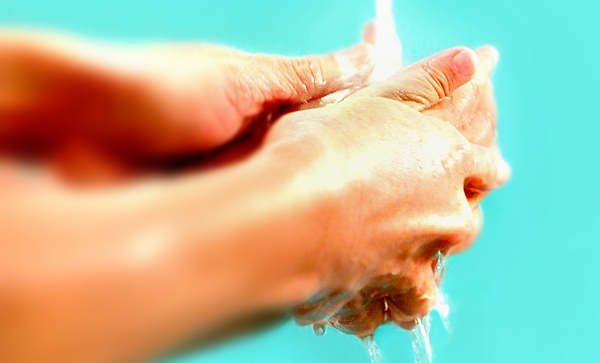The novel coronavirus, COVID-19, is affecting people across the globe, in states and cities, in our backyards, and our own living spaces. Unlike many other kinds of disasters, which are relatively geographically and temporally limited, this one is hitting many millions of people around the world at essentially the same time. However, the experience of COVID-19 is not the same for everyone – it varies by many of the same factors that affect other disaster and public health outcomes including race, income, employment type and status, household responsibilities, and housing status.
Like many people, I spent the early part of 2020 trying to understand what was happening, and settling into a new mode of work in mid-March. It's been a challenge to make sense of how water appears in the COVID-19 response. As I started to compile some initial resources, I wasn't sure what I would find. While related concerns about food safety abound, less has been written about water. However, because hand washing is an essential tool in slowing the spread of COVID-19, the water issues become clear pretty quickly.
First, the novel coronavirus has made it evident once again that access to safe and clean water is, among other things, a critical public health issue. When it comes to water safety, the Centers for Disease Control and the California State Water Boards, among others, have developed clear guidance, with the water boards stating that “state-required treatment process removes viruses, including COVID-19.” Dave Eggerton, executive director of the Association of California Water Agencies, said in an interview with the Public Policy Institute of California: “The virus is not a danger to our public water supplies, and buying bottled water in response to it is unnecessary.”
However, not everyone has the same access to safe water. Recognizing that, California's Governor Newsom issued an executive order restricting water shut-offs for homes and small businesses and restoring service for some others. CalEPA provided further guidance on the issue. In addition, measures have been taken by some municipalities to provide housing for those without, and to increase the number of hand-washing or other types of hygiene stations that are available for unhoused populations.
While access to safe, clean water is critical, ensuring that waste products are handled correctly is yet another challenge. Many are concerned about things like wipes and paper towels being flushed down toilets due to the very real shortage of toilet paper, which can lead to sewer system problems, including back-ups. As inconvenient as it may be, people are urged to put anything other than toilet paper in the trash – not the toilet – to ensure that sewage overflows do not lead to yet more public health problems.
On the research side, there are some interesting stories emerging. For example, because signs of the novel coronavirus may be detected in sewage, water treatment plants could give some indication of the presence of the virus in the absence of, or in addition to, individual testing. There are also interesting questions related to changes in water use as people's lives have shifted dramatically, and how that will impact utilities.
Because we are still early in the process of dealing with this global pandemic, new information will continue to surface. We have put together a web page that includes links to further resources, including some in multiple languages, and are updating that as more become available.
Please visit our “Water and COVID-19” page for more information, including multi-lingual resources where possible. For information on a broad array of COVID-19 issues, including agriculture, food and nutrition, and gardening, visit the UC Division of Agriculture and Natural Resources information pages.
